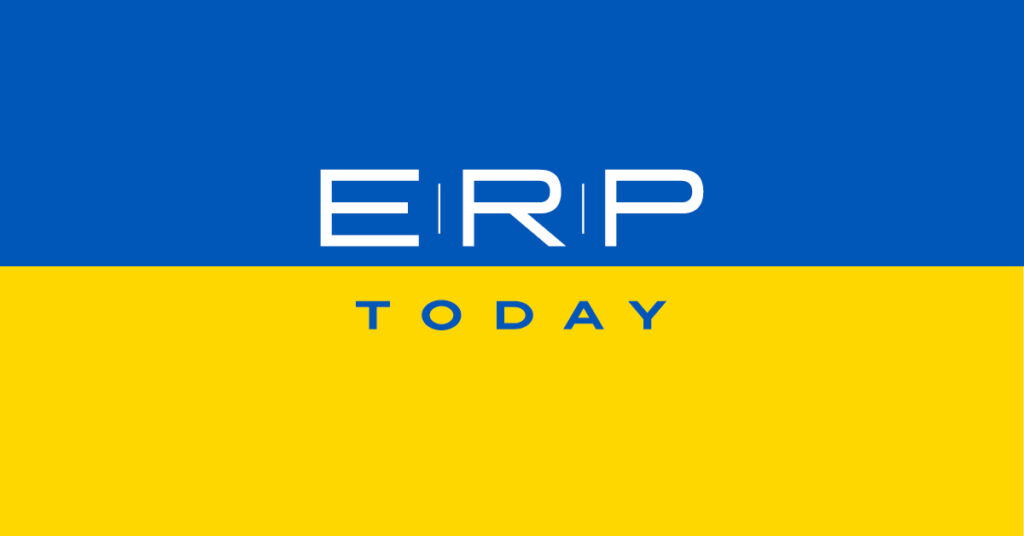Crisis & opportunity
M&A activity is set to play a key role in the enterprise tech sector as strategic alliances, opportune acquisitions and distressed sales bolster the ERP market
It used to be the case that it was only when the tide went out that you could see who was swimming naked. The COVID crisis has broken that rule with many perfectly well run businesses with sound strategies and high performing teams now fighting for survival. That said, many businesses have performed resiliently through this period and in a limited number of cases have even prospered. It’s been said that this is perhaps the greatest due diligence test on any business and if you can weather this storm then your future is set fair.
Sometimes I think we also forget the influence that innovation and technology can have on our economy. 40 percent of jobs today didn’t exist ten years ago, largely driven by tech and innovation, and one thing COVID has clearly taught business is that working remotely is far easier than many feared and that it can have a positive impact on productivity.
So, what does this all mean for deal making in the tech sector? Very quickly we concluded that a significant driver of M&A activity and investment in a post COVID world could well focus on tech businesses. The UK is well placed, being a close third to China in the global league for investment in tech (with the US the clear leader) and with access to significant liquidity in the funding markets. This is a key differentiator to the period post the GFC – then liquidity was in short supply and recovery took several years, now the situation is markedly different. And that’s before we factor in public policy, with early signs being that the Treasury will throw significant weight behind the recovery this time.
Our recent report into software valuations demonstrated the robustness of valuations in the space. This is clearly evidenced by the chart below which demonstrates that on average share prices more than recovered their losses suffered going into COVID by 31 May against a benchmark of the S&P 500 being 10 percent down.
I do believe that in years to come we will look back and see this as an inflexion point in the tech industry
Perhaps not surprisingly communications and collaboration is the biggest winner and a key area for M&A in recent times – at Alantra alone we’ve advised on three stand out transactions in that market in the last six months. And given that Amazon are reported to have hired an additional 100,000 people in the crisis it’s no surprise to see supply chain towards the top of the table.
Going forward, in addition to the comms and collaboration theme evidenced above, we see five key trends which will be drivers of activity in the immediate future.
The Hybrid Cloud and Multi Cloud Battlegrounds
We’ve seen significant interest in businesses with specialist deployment skills in the major three providers – AWS, Azure and Google – especially where they have developed specialist applications around those platforms in areas such as data analytics, application lifecycle management and API driven integration.
Automation – AI, ML and Applied AI
Artificial intelligence (AI) has been a trending topic for a while now but the emergence of new branches within it led to more sophistication and widened its use cases. Machine learning (ML) and AI and its fundamental sub-segments (neural networks, natural language processing, etc.) have seen strong adoption and advances by tech majors, cloud platforms, core chip vendors and the open source community but few pure-play software leaders.
On the other hand, driven by increasingly more powerful processing and data management, applied artificial intelligence (AAI) has now wider capabilities and is reshaping more industries and creating new leaders. It helps organisations automate more processes, track more data and augment human decisions; a good example of this would be robotic process automation (RPA).
Democritization
• Democratization of software design is enabled by so-called low-code platforms; visual development environments that allow any person to drag and drop components, connect them together and create a mobile or web app with limited or no coding experience (citizen developers):
• Low-code platforms also reduce the amount of hand coding and therefore setup costs, maintenance and time to market
• Most low-code platform providers offered free access to their platforms during the COVID-19 pandemic to help citizen developers code apps more rapidly
• Democratization also applies to data analytics where citizen data analysts can generate complex data models without the skills of a data scientist
• New data analytics and visualisation emerged as a key battleground for cloud and enterprise majors in 2019
Edge computing and 5G
Edge computing aims to process data close to the location where they are produced to save bandwidth and latency creating local smart spaces, off the grid and closer to its users by bringing compute capabilities into the network.
Edge computing is expected to seed the 5G market before widespread coverage by processing huge amounts of data locally, thereby reducing required bandwidth. In the long run and combined with fifth-generation mobile networks roll-out (100x faster than current technology), edge computing will definitely change the way networks are organised (along with cloud distribution) and how people and organisations share and process data and enable rapid adoption of IoT solutions.
Cybersecurity
Another topic that has been trending for a while, cybersecurity, is still evolving, with cyber threats on the rise. The increasing digitalisation of organisations make them increasingly vulnerable to cyber attacks, as shown by the surge in attacks following the COVID-19 pandemic.
The rise of AI has also led to an increasing number of potential security breaches and an increased difficulty in detecting them. Cybersecurity needs to cover AI systems by leveraging on ML to understand and protect them.
Restructuring M&A
I started this article referencing the fact that many quality businesses will be facing significant challenges and it would be remiss of me not to address the matter of restructuring achieved through M&A. In previous recessions it would be difficult to see a route through to survival for these businesses challenged with survival. This however is a different form of crisis and it’s clear the government does not want to see high quality businesses fail as a result of action dictated by them. Additionally, the funding market will recognize that with the appropriate support many of these can be rescued coming out of this and reclaim their market position. In some circumstances they may also emerge stronger, as other weaker peers don’t attract similar support. Examples of sectors where this will be evident are enterprise software suppliers into travel and leisure as well as some of the retail space – these end markets will recover and, provided with the right support and some patience, so will they.
Summary
So in summary, whilst no one can honestly say this is an environment they would have welcomed I do believe that in years to come we will look back and see this as an inflexion point in the tech industry and potentially even more fundamentally across the wider economy and M&A landscape.
“We will look back and see this as an inflexion point in the tech industry and potentially even more fundamentally across the wider economy”
“Perhaps not surprisingly communications and collaboration is the biggest winner and a key area for M&A in recent times”
Is private equity dry powder going to ignite the SAP market?
By Ben McGrail*
The coronavirus pandemic and the resulting global lockdown have caused a sudden and sharp shock to the world economy. The uncertainty has weighed heavily on M&A with deal volumes in Q1 down by over a third compared with the same period last year. The immediate priority for business leaders has been to limit the damage, mitigate risk and ensure survival. However, upheaval on this scale creates significant opportunities for cash-rich businesses and there is good reason to predict that, as normality returns, there will be a significant increase in M&A activity.
The severe economic difficulties that the coronavirus outbreak has inflicted on almost every sector means that there will be a large number of distressed companies looking for buyers. Alongside this, companies will be selling off non-core entities to improve their cash positions and their liquidity. We will also see an increase in mergers as organisations come together to cut costs, increase market share and boost their buying power. EY report that more than half of executives globally are planning an acquisition in the next 12 months.
Private equity is sitting on record levels of unallocated capital
According to new data from Preqin, private equity (PE) houses are sitting on some $1.4trillion of ‘dry powder’ (unallocated but committed investment capital), the largest amount of cash on record, and twice what they had to invest just five years ago. This is supported by comments from KPMG, news from KKR and announcements from Berkshire Hathaway. High company valuations have put many deals on hold. But now the impact of the coronavirus is driving down those valuations and a growing number of companies are finding themselves under pressure to raise capital. As a result, PE and corporate buyers will find more attractive opportunities and deal volumes are expected to increase, particularly when confidence returns to the market.
What has been less reported is what role companies’ enterprise IT and in particular their SAP applications will play during this increase in merger, acquisition and divestment deal-making.
The major growth trends in the SAP market are S/4HANA and the move to cloud. Companies have been preparing for the migration to SAP S/4HANA in order to benefit from the new opportunities for business productivity improvements through high-performance database technology, Artificial Intelligence, the Internet of Things and embedded data analytics.
Companies should be working on the separation of their SAP systems well ahead of a divestment
With the impact that the coronavirus pandemic has already had on top and bottom line performance this year, we can expect to see investment in S/4HANA programmes and other large-scale IT transformation initiatives drift into 2021 to protect short-term profitability. However, we should also expect to see a sizeable uptick in SAP carve-out projects: system splits mandated by a business decision to sell off non-core or underperforming parts of the business are very time sensitive. They cannot be pushed back into future financial periods. The management of a company that’s divesting a part of their business will not even consider delaying a deal while they think about how to disentangle their integrated IT systems. In fact, I would make the case that selling companies should be looking to bring this work forward and make progress on separating their SAP landscape ahead of a planned deal. This does not necessarily mean delivering the entire project. Why not run a short software-led system assessment so that you are well prepared in advance of any deal finalisation?
PE houses tend not to get deeply involved in the IT strategy of their portfolio businesses. However, they should pay close attention to IT due diligence and planning during the deal phase as there are significant risks and costs in getting it wrong. Transition Service Agreements (TSAs) between the parties stipulate conditions that have to be met by both sides and missing the deadline to move off a seller’s IT landscape can incur significant penalties. And with the investment clock ticking, PE in particular will be keen to put their new asset to work as soon as possible rather than get drawn into long and expensive IT implementation programmes. Therefore buyers, whether corporate or PE, should require as part of the acquisition terms that sellers deliver the relevant system separations in advance or as part of the deal.
An already separated, hosted and supported SAP landscape would add significant value to any potential divestment
Selling companies and their IT departments can prepare the ground for divestments by scoping, planning and perhaps even executing the required IT system splits ahead of time, particularly for core, complex applications like SAP. Getting ahead of the game here will speed up the entire transaction, benefiting both sides, and can add value to the divestment by eliminating the buyer’s risk of future IT separation. A seller who delivers an IT separation ahead of a deal allows a buyer to avoid the cost and uncertainty of a long TSA and the risk and distraction of a greenfield IT implementation programme.
That’s why we are starting to advise our SAP customers, particularly in the hardest hit industries such as aviation, automotive and manufacturing, to talk confidentially to their businesses to understand the plans for divestment, and to invest in business transformation software to allow them to scope the size and scale of the resulting SAP system separation ahead of any agreed deals. And that’s why we are advising PE customers and other potential corporate buyers to request that the seller provides a completed system separation – hosted on one of the global cloud platforms (AWS, Microsoft Azure or Google Cloud) so that it is independent of the seller’s on-premise landscape – to avoid facing a long, costly IT implementation project following an acquisition.
Business and IT leaders preparing for mergers, acquisitions and divestments – corporate CFOs and CIOs, PE dealmakers and portfolio operations managers – need to recognise that a properly separated and independently hosted enterprise IT landscape is a valuable asset for both sides in a successful M&A deal. As we start to move out of the lockdown and begin the path back to normality, that’s going to be more important than ever.
*Ben McGrail is managing director at SNP.
SNP did not pay for this article




